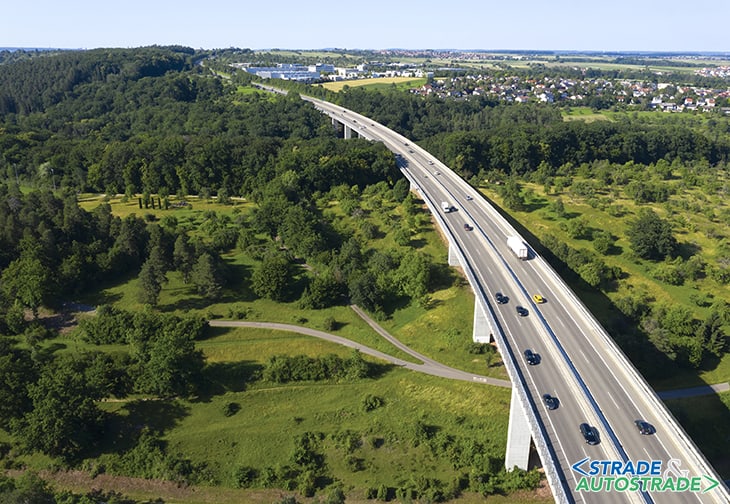![]() Per la versione in Italiano: https://www.stradeeautostrade.it/tecnologie-e-sistemi/il-sistema-di-monitoraggio-ponti-che-risponde-alle-linee-guida-del-c-s-ll-pp/
Per la versione in Italiano: https://www.stradeeautostrade.it/tecnologie-e-sistemi/il-sistema-di-monitoraggio-ponti-che-risponde-alle-linee-guida-del-c-s-ll-pp/
In accordance with the Guidelines for the monitoring of bridges and viaducts recently issued by C.S.LL.PP., optical fibre technologies can monitor the health status of an infrastructure, acquiring real-time responses both in their normal functioning and in case of abnormal events.
It is probably easy to imagine but few people know it: in Italy, the number of bridges on our roads is astounding (a census of the Ministry of Infrastructure and Transport lists over one and a half million bridges). This is easy to imagine because we all are, more or less, familiar with the typical landscapes in our country.
Indeed, Italy boasts a rather unique geographic and orographic conformation: from Predoi to Portopalo di Capo Passero, the northernmost and southernmost villages respectively, there is a distance of 1,628 km, while the longitudinal distance between the westernmost point (Bardonecchia) and the easternmost point (Santa Maria di Leuca) reaches 1,100 km.
This geometric inconsistency is made even more complex by mountain ranges and watercourses: the Alps and the Apennines, crossing our territory transversally and longitudinally, along with watercourses that are never scarce on our territory, make viaducts, bridges and tunnels indispensable for connecting the peninsula.
Such bridges and viaducts, due both to the conformation of the territory and the different historical times in which they were built, present very different structures and architectural criteria: from caisson structures to arched structures, from cable-stayed structures to those with pre-stressed beams.
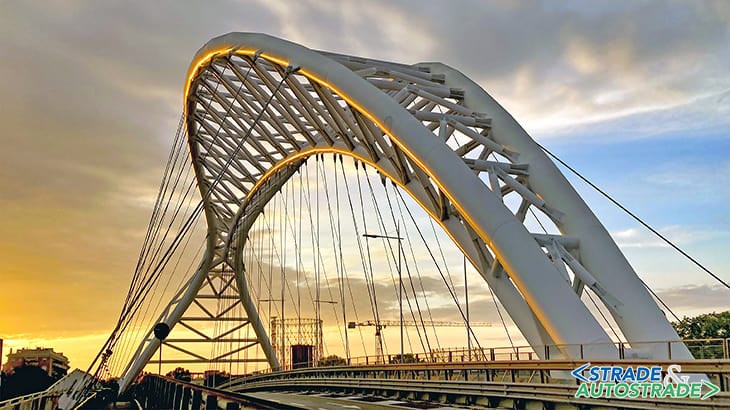
The above-mentioned census, however, also shows that out of that one and a half million bridges, just over 60,000 are regularly monitored.
A gap in the system about which the Superior Council of Public Works issued accurate indications by publishing the new Guidelines for the classification and management of risk, safety assessment and monitoring of existing bridges, published in the Ministerial Decree 204 of 21 July 2022.
This was followed by operational instructions for the application of the Guidelines published by ANSFISA in September of the same year.
In particular, section 7.6.3 of the Ministerial Decree of the Superior Council of Public Works states that “When selecting hardware and software components, it is recommended to follow the indications of the UNI TR 11634 Guidelines. For reasons of durability and insensitivity to electromagnetic interference, optical fibre technologies are generally to be preferred”.
“OF BRIDGE” monitoring system
A fundamental service for the Contracting Stations that bear the burden of implementation and for all those companies that are doing research and design in the field of fibre optic systems, such as the Mon-it Group, of which NTSG Italia represents the Italian branch and whose OF SYSTEM patent fully meets the requirements and performance characteristics laid down by the Regulations (https://www.ntsgen.com/en/bridges/).
In particular, the OF BRIDGE monitoring system was created in order to offer a tool capable of detecting deformation, displacement, rotation and vibration on any type of bridge. “This is a unique and also exemplary system” – explains Paolo Persi dal Marmo, CEO of NTSG Italia, “since it can be applied to very diverse works”.
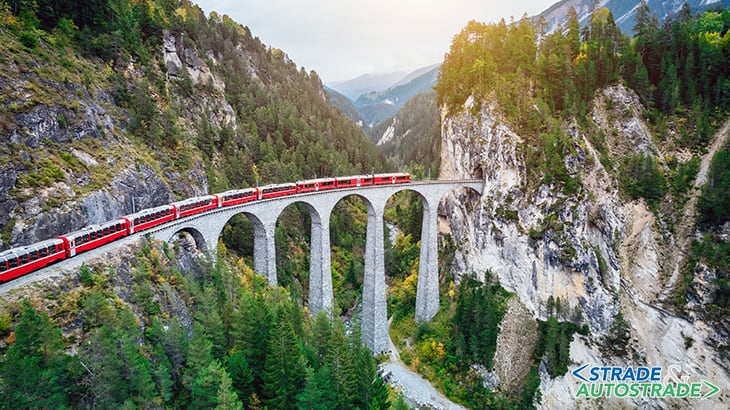
The installation of the OF BRIDGE system does not have to be excessively disruptive: the structure to be monitored is cabled by a multi-fibre cable, which connects the measurement sections on the spans, piers and abutments, in both directions, to which thousands of sensors are applied, each capable of being queried with a frequency of up to 5,000 information per second, operating 24 hours a day, 365 days a year.
For example, let us consider a viaduct consisting of two carriageways of approximately 415 m, with 13 spans per carriageway that are 32 m long.
Such an infrastructure will contain 178 strain and temperature sensors and 56 single-axis inclinometers for a total backbone of 1,500 m of laid fibre. To realise such a work, only one carriageway in each direction needs to be closed to traffic for the 23 days necessary to install the system.
This dense network of fibre sensors will measure numerous quantities in real time, which are essential for determining the good condition of the structure. It will therefore be possible to monitor the tensional state of the spans, the inclination of the abutments and the rotation of the piers; it will check the vertical and transverse deflection of the spans, as well as their displacements.
The temperature and deformations of the structure due to thermal effects will also be monitored, just like vibrations will be measured and the passing loads will be estimated at all times.
The simultaneous installation of thermal sensors will allow to obtain data and measurements that are free of the thermal effect.
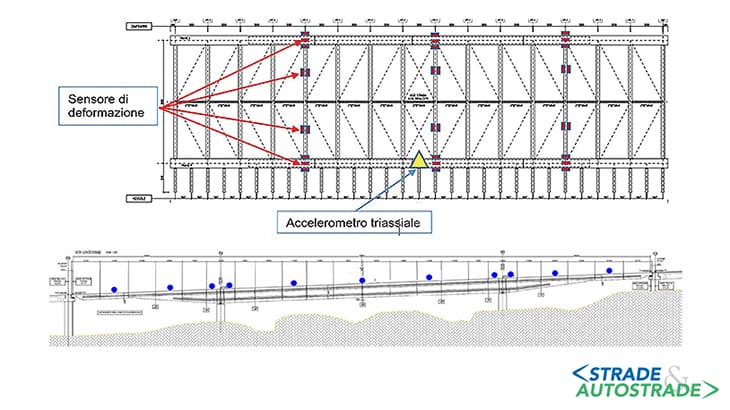
The optical fibre sensors are connected to an optical interrogator: a data acquisition machine that sends a light beam into the fibre and interprets the measurements sent by the sensors.
The acquisition machine is connected to a server on which the Edgegateway analysis software is installed, which transforms the data coming from the sensors into engineering data and sends them to the data visualisation platform; from here the operator in charge of monitoring will see the processed data, any alarms and all the past data of the facility.
Security assessment in data flow management
The optical fibre network connecting the sensors to each other and to the various acquisition machines is composed of an armoured and anti-abrasion multi-fibre cable backbone with 16, 32 or 64 or more optical fibres. The armouring consists of an outer anti-abrasion polyurethane coating and, on the inside, of protective corrugated steel and Kevlar fibres for pulling.
The connection between the backbone and the sensors is achieved by means of a mono-modal optical fibre cable, which is also armoured and non-rotting, fitted with a protective cover that is 2 mm thick or more, depending on the application environment. The connections between the sensors and the backbone are protected inside junction boxes of the appropriate size.
Since the optical system does not carry electricity but light, it does not require shielding or protection from water or humidity. It is also worth emphasising the environmental benefits of the project, which has a very low impact on the environment since optical fibre technology does not use electricity and “passively” exploits the propagation of light alone.
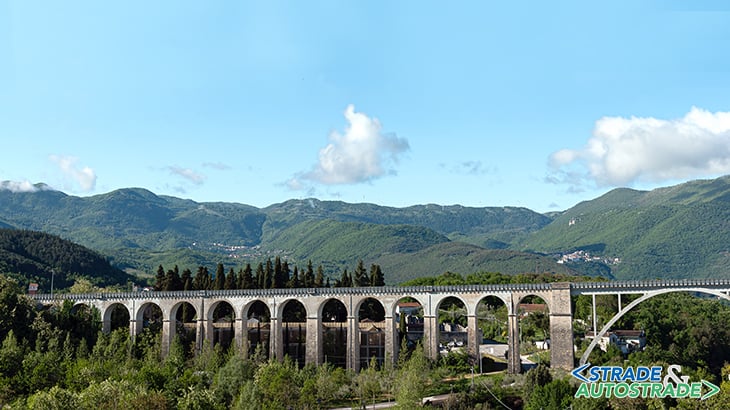
The system also preserves the architectural value of the structures and the landscape value of the context in which they are located, since the fibres, which can also be applied in water, can be embedded in the materials, becoming invisible.
The total environmental neutrality can also be found in the fact that the optical fibres do not generate any electric or magnetic fields and therefore do not pose any risk of sparks, which in turn often cause fires.
This is an effective and efficient solution that is destined to last, as the technology on which it is based is very durable: the light passing through the fibres causes the glass they are made of to decay, which can be measured on a centuries-long scale, thus making it a highly recyclable and sustainable product.
![]() Per la versione in Italiano: https://www.stradeeautostrade.it/tecnologie-e-sistemi/il-sistema-di-monitoraggio-ponti-che-risponde-alle-linee-guida-del-c-s-ll-pp/
Per la versione in Italiano: https://www.stradeeautostrade.it/tecnologie-e-sistemi/il-sistema-di-monitoraggio-ponti-che-risponde-alle-linee-guida-del-c-s-ll-pp/

